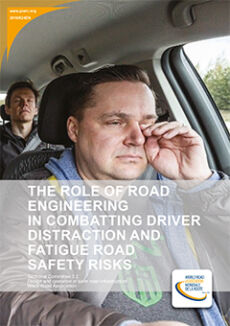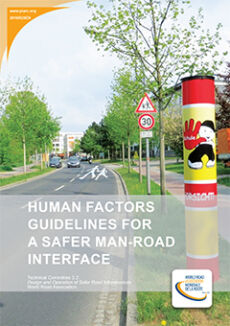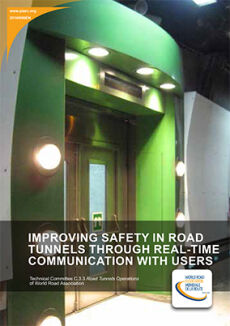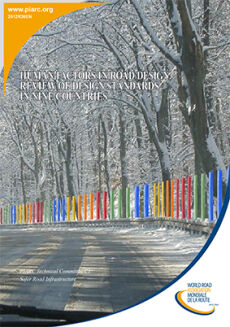Technical Reports Road safety
This page lists technical reports of PIARC in the field of road safety. These publications are classified chronologically.
-
The Role of Road Engineering in Combatting Driver Distraction and Fatigue Road Safety Risks

Driver distraction and fatigue are a problem because, as remarkable as our abilities are, we humans are fallible and our abilities have limitations. Driver distraction and fatigue incorporates elements of both limitations and fallibility. On top of our limitations and fallibilities, driving a vehicle is a surprisingly complex task that involves numerous elements. A driver is required to move between these tasks to effectively deal with the ever changing road environment and traffic situation. [...]
-
Human factors guidelines for a safer man-road interface

In the case of road safety, the Human Factors concept considers road characteristics that influence a driver's right or wrong driving actions. It understands the causes of road users' operational mistakes as the first step in a chain of actions which may proceed to an accident. Many often observed operational mistakes result from a direct, subconscious interaction between road characteristics and road users' threshold limit values of perception, information processing and action. Because the driver's [...]
-
Fixed fire fighting systems in road tunnels: Current practices and recommendations

Fixed Fire Fighting Systems (FFFS) have been routinely used in road tunnels in countries such as Japan and Australia for decades, and there is increased interest in the use of FFFS in parts of Europe, North America and Asia. Large fire events in road tunnels continue to show the consequences of such an event. These consequences can be to the users, the tunnel infrastructure, and the impact to the wider road network on society. This has maintained the pressure for further improvements to techniques [...]
-
Improving safety in road tunnels through real-time communication with users

This report is a continuation of the one published by PIARC in 2008 on "Human Factors and road tunnel safety regarding users". It addresses two specific points raised in the conclusion of the 2008 report: "It is most important that motorists understand how to behave in tunnels, in critical situation" "In case of fire, tunnel users should be alerted by at least two different channels of communication". This report describes human behavioural aspects when driving, and how to communicate [...]
-
Human factors in road design. Review of design standards in nine countries

This report reviews how human factors are explicitly or implicitly considered in the current road design standards of the following countries : Australia, Canada, China, Czech Republic, France, Hungary, Japan, the Netherlands and Portugal. The report focuses on design features as they relate to the spatial perception of the driver. It covers in particular : the need for the driver to anticipate any critical point; management of the field of view to ensure appropriate speed and lane tracking; [...]